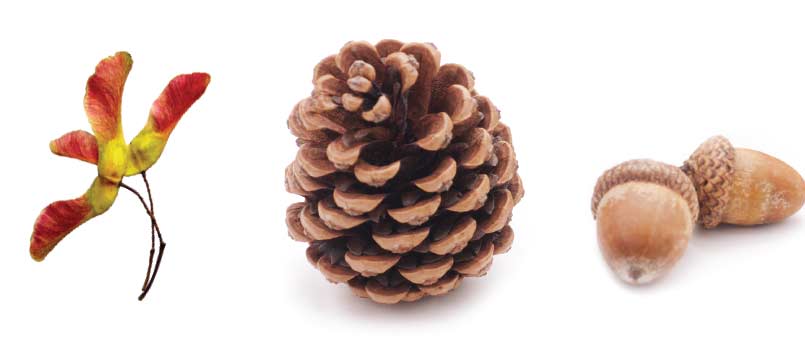
As the pandemic increased its stranglehold worldwide, a small caterpillar munched its way across Ontario and Watershed country with the same effect on nature. “The Scourge of the Gypsy Moth,” foretold by Catherine Stutt in the spring issue, manifested itself in the defoliation of stands of mature forests in areas across southern Ontario.
The gypsy moth is now referred to as the LDD moth, the acronym for its Latin name: Lymantria dispar dispar. Legions of LDD caterpillars went after the oak first, their preferred tree, but once the oak trees were stripped of their leaves, they moved on to other deciduous and coniferous trees. While most healthy deciduous trees will recover, pine and spruce trees may not survive complete defoliation. Apart from the stress on the trees and the loss of forest canopy, it’s difficult to assess the long-term effects of the LDD infestation on the flora and fauna and how it will affect the annual forest mast crop.
The mast crop is the botanical term for the nuts, seeds, cones, buds and fruits of trees and shrubs that are eaten by wildlife. Acorns from the red and white oak families are an abundant mast crop. Full of carbohydrates, fat and vitamins, the acorns mature and drop in late August/early September and are the first choice on the dinner menu for whitetail deer, turkeys and the black bears that roam in the region. This year’s LDD infestation of the oak trees has resulted in the production of very few acorns. Male and female flowers on the red oak tree form in alternate years. As a result, defoliation means no substantial acorn production for two years. Fortunately, the white oak family produces both male and female flowers the same year, increasing the chance of acorns the following year.
Maples were also hit hard by the LDD moth. Sugar maple keys are the second most important wildlife food source. Carried on autumn breezes, they spiral throughout the woodlands providing forest fodder for deer, squirrels, chipmunks, turkeys and a host of other birds.
Spruce and pinecone crops in areas affected by LDD moths are scarce, depleting the food supply for squirrels in particular. The voracious cater – pillars also had an appetite for wild apple trees, hawthorn, choke cherry, bittersweet and saskatoon, stripping them of their leaves and young fruit.
The scarcity of this fall’s mast crop will change the habits and habitats of local wildlife. The bears and deer in Watershed country will shift from the forest to farmlands and meet their dietary needs with soybeans and corn. Turkeys and ruffed grouse will also adapt their locations. The smaller and less nomadic forest creatures and songbirds will search for areas where defoliation wasn’t as severe. Predators such as coyotes, foxes, fishers, owls and hawks will follow and hunt the critters in their new locales.
There’s no question that the LDD moth has left its mark on nature in our region. But nature is adaptable and resilient, and life will go on. And there’s good news on the horizon. Mike Muldoon, Forest Trails Coordinator for Northumberland County reports that field crews have noticed fewer egg masses and significant LDD caterpillar die-off from the NPV virus and a fungal disease that attacks them. While this year’s attack was recognized as one of the most severe in the seven-to-ten-year cycle of the LDD moth, we may have seen the worst of it for a while.
Story by:
Roger Thomas




